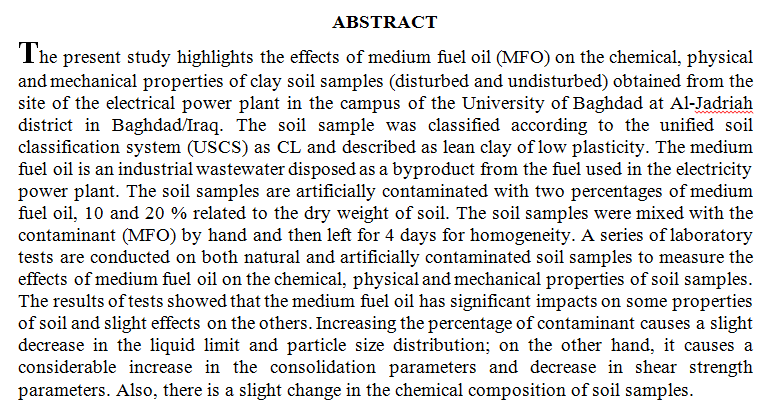
Carbonate matrix stimulation technology has progressed tremendously in the last decade through creative laboratory research and novel fluid advancements. Still, existing methods for optimizing the stimulation of wells in vast carbonate reservoirs are inadequate. Consequently, oil and gas wells are stimulated routinely to expand production and maximize recovery. Matrix acidizing is extensively used because of its low cost and ability to restore the original productivity of damaged wells and provide additional production capacity. The Ahdeb oil field lacks studies in matrix acidizing; therefore, this work provided new information on limestone acidizing in the Mishrif reservoir. Moreover, several reports have been issued on the difficulties en
... Show MoreNasryia oil field is located about 38 Km to the north-west of Nasryia city. The field was discovered in 1975 after doing seismic by Iraqi national oil company. Mishrif formation is a carbonate rock (Limestone and Dolomite) and its thickness reach to 170m. The main reservoir is the lower Mishrif (MB) layer which has medium permeability (3.5-100) md and good porosity (10-25) %. Form well logging interpretation, it has been confirmed the rock type of Mishrif formation as carbonate rock. A ten meter shale layer is separating the MA from MB layer. Environmental corrections had been applied on well logs to use the corrected one in the analysis. The combination of Neutron-Density porosity has been chosen for interpretation as it is c
... Show More (1)
(1)
Geologic modeling is the art of constructing a structural and stratigraphic model of a reservoir from analyses and interpretations of seismic data, log data, core data, etc. [1].
A static reservoir model typically involves four main stages, these stages are Structural modeling, Stratigraphic modeling, Lithological modeling and Petrophysical modeling [2].
Ismail field is exploration structure, located in the north Iraq, about 55 km north-west of Kirkuk city, to the north-west of the Bai Hassan field, the distance between the Bai Hassan field and Ismael field is about one kilometer [3].
Tertiary period reservoir sequences (Main Limestone), which comprise many economica
... Show MoreSadi formation is one of the main productive formations in some of Iraqi oil fields. This formation is characterized by its low permeability values leading to low production rates that could be obtained by the natural flow.
Thus, Sadi formation in Halfaya oil field has been selected to study the success of both of "Acid fracturing" and "Hydraulic fracturing" treatments to increase the production rate in this reservoir.
In acid fracturing, four different scenarios have been selected to verify the effect of the injected fluid acid type, concentration and their effect on the damage severity along the entire reservoir.
The reservoir damage severity has been taken as "Shallow–Medium– Sever
... Show More (4)
(4)
Results of the current study demonstratedthat out of eighty-three isolatesof Pseudomonas aeruginosa,only twenty-five isolateswere resistant to five different antibiotics (of different classes) that were consequentlyconsideredmultidrug resistant isolates.These isolates developed variable susceptibility toward Eucalyptuscamaldulensisleavesoil (ECO). GC-MS analysis of ECOrevealed that the aromatic oil eugenol is the major constituent.However, the most frequent MIC was 0.39 µg/ml, while the lowest frequent MIC was 3.125 µg/ml.Moreover, this oil at ½ MIC (0.195µg/ml) increased the gene expression of exoU. Itis concluded from the outcomes of the studythat ECOmay cause severe damagewhen used to treat infections caused by P. aeruginosa.
... Show More (1)
(1)
Permeability is one of the essential petrophysical properties of rocks, reflecting the rock's ability to pass fluids. It is considered the basis for building any model to predict well deliverability. Yamama formation carbonate rocks are distinguished by sedimentary cycles that separate formation into reservoir units and insulating layers, a very complex porous system caused by secondary porosity due to substitute and dissolution processes. Those factors create permeability variables and vary significantly. Three ways used for permeability calculation, the firstly was the classical method, which only related the permeability to the porosity, resulting in a weak relationship. Secondly, the flow zone indicator (FZI) was divided reservoir into
... Show More (5)
(5)
 (2)
(2)
 (3)
(3)
 (2)
(2)
In this study, oxidative desulfurization of dibenzothiophene (DBT) with H2O2 as an oxidant was studied, whereas the catalyst used was zirconium oxide supported on Activated carbon (AC). Zirconium oxide (ZrO2) was impregnated over prepared activated carbon (AC) and characterized by various techniques such as XRD, FTIR, BET, SEM, and EDX. This composite was used as a heterogeneous catalyst for oxidation desulfurization of simulated oil. The results of this study showed that ZrO2/AC composite exhibited significant catalytic activity and stability, effectively lowering sulfur content under mild conditions. Factors such as reaction temperature (30, 40, 50, 60°C), time (5, 10, 15,20,30,60, 80 100 min), catalyst dose (0.3, 0.5,
... Show More